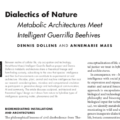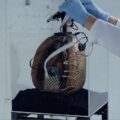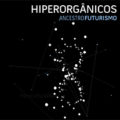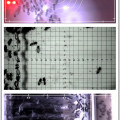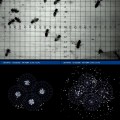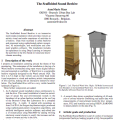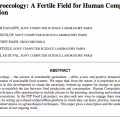Papers (co-)written by the artist AnneMarie Maes
The Art + Science + Policy Nexus – publication by EU/JRC
How do cutting edge art-science initiatives intersect with policy? This scoping study surveys the landscape of the art-science-policy network, focussing on how and when art-science projects interact with policy and policymakers. What emerges is a diversity of channels by which learning and ideas from art-science make their way to policy
Alchimia Nova - De l’emergència de conrear el nostre Jardí, 2021
Resum:
L’artista i apicultora AnneMarie Maes, fascinada per les abelles des de fa més de dues dècades, tracta l’estreta interacció i coevolució entre aquests insectes i els ecosistemes urbans, mitjançant pràctiques d’investigació artística, en col·laboració amb científics i enginyers.
Dialectics of Nature - Leonardo MIT press, 2020
Leonardo: https://www.mitpressjournals.org/doi/abs/10.1162/leon_a_01770
Between realms of cellular life, city occupation and technology, AnneMarie Maes’s Intelligent Guerrilla Beehive project and Dennis Dollens’s metabolic architectures share a theoretical lineage and form-finding curiosity, subscribing to the vie...
Sensorial Skin, Starts Residency at Hybrid Forms Lab, 2019-2020
The artwork L’Origine du Monde’ shows a strongly enlarged bacterial chain made from glass cells and filled with colonies of cyanobacteria carrying out live real-time photosynthesis. Cyanobacteria are photosynthetic bacteria that live in moist soil and water, often in a symbiotic relationship with plants or lichen.
The glass cells for the artwork have been specially produced by glassblowers in Venice. Different strains of cyanobacteria have been cultured at the Hybrid Forms Lab, which is specialised in photosynthesis.
paper for 'Renewable Futures: Hybrid Labs' - Aalto University, 2019
For most of the past decade I have been growing, hacking, digitizing, building, and thinking
about beehives - particularly those in urban areas. Collaborating with a team of biologists, I
am reconceptualizing what a beehive is and what it can be. The bio-art project The
Intelligent Beehive monitors the behaviour of urban honeybee colonies as a source of
inspiration for ongoing artistic research into issues of ecological, architectural and social
sustainability in urban environments.
paper for Hiperorganicos - Rio de Janeiro University, 2018
The Intelligent Guerrilla Beehive is a research project on the edge of art and science. It evokes issues of sustainability and biodiversity, giving viewers an artistic experience of my ongoing research related to the disappearance of the honeybee. The goal of the Intelligent Beehive is a double one. At one hand it offers a safe refuge for city honeybees, and at the other hand is is a biosensor that interacts with the environment and that measures the pollution of the foraging fields around the beeh...
Autopoietix - Intelligent Beehive as Architectural Data, 2017
I came to Maes’s work because her experiments connect living, intelligent systems and technology/biosciences with social (colony/urbanism) architectural and technological prototyping and experimentation. Her work illustrates radical and necessary ecological searches for sharing urban life. Equally, her toolset and research trajectory
Open Systems Exploration for Ecosystems Leveraging - paper, 2016
Abstract. We established a Complex Systems Digital Campus e-laboratory “Open Systems Exploration for Ecosystems Leveraging” in view of re- designing sustainable social-ecological systems related to food produc- tion ranging in food, health, community, economy, and environment. 6 initial projects have been set up, namely Synecoculture, P2P Food Lab, Open Systems Data Analytics, The Bee Laboratory, Open Systems Sim- ulation and One-Health Food Lab.
The Sound Beehive Experiment - paper, 2015
The Sound Beehive Experiment
The Sound Beehive Experiment monitors the development of a bee colony on the basis of the sounds it generates. For this purpose, we developed a beehive that is equipped with sensors, microphones and cameras. We made sure that this equipment is not hindering the bees in their daily action. The Sound Beehive is installed in our field laboratory on a rooftop in the Brussels city centre.
Fig. 7. Diagram of the technical architecture of the Sound Beehive.
The...
The Scaffolded Sound Beehive - paper for IJCAI exhibition & conference, 2015
The Scaffolded Sound Beehive is an immersive multi-media installation which provides viewers an artistic visual and audio experience of activities in a beehive. Data were recorded in urban beehives and processed using sophisticated pattern recognition, AI technologies, and sonification and com- puter graphics software. The installation includes an experiment in using Deep Learning to interpret the activities in the hive based on sound and micro-climate...
Agroecology: A Fertile Field for Human Computation - paper, 2014
abstract:
Human Computation may be the best approach for the monitoring/analysis/management of agroe- cological food production systems. This is the preliminary conclusion we have reached in the P2P Food Lab experiments.
